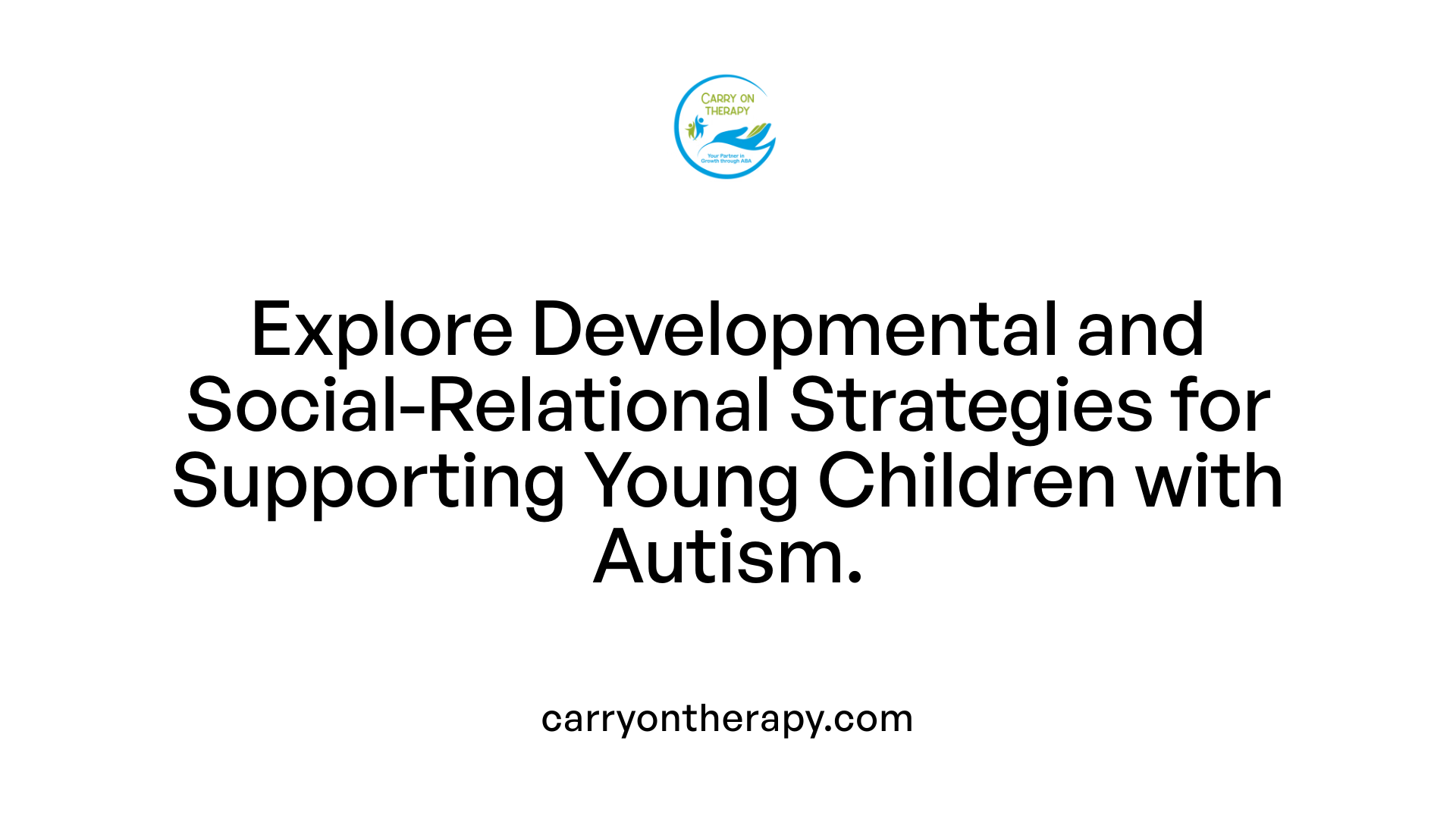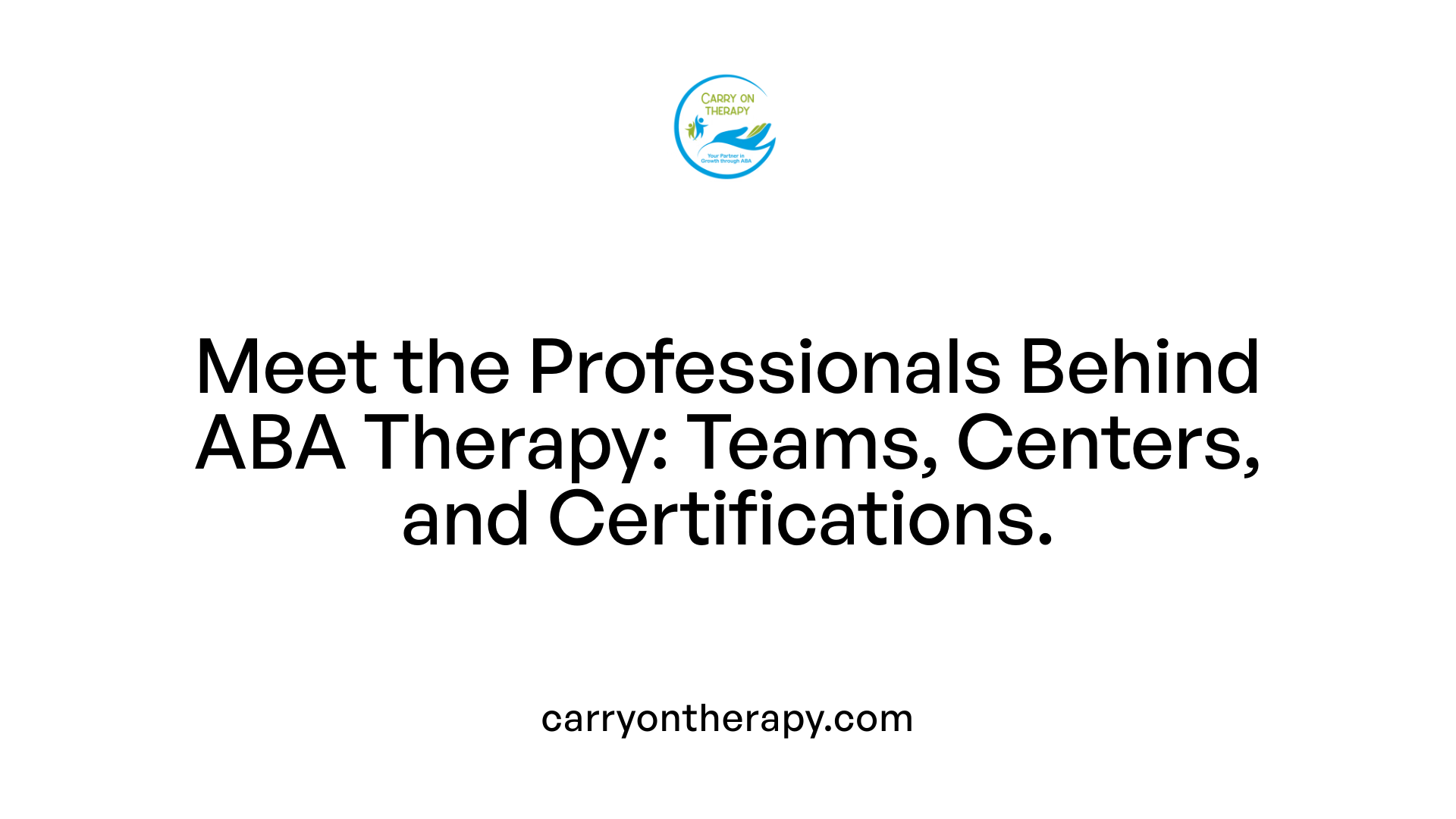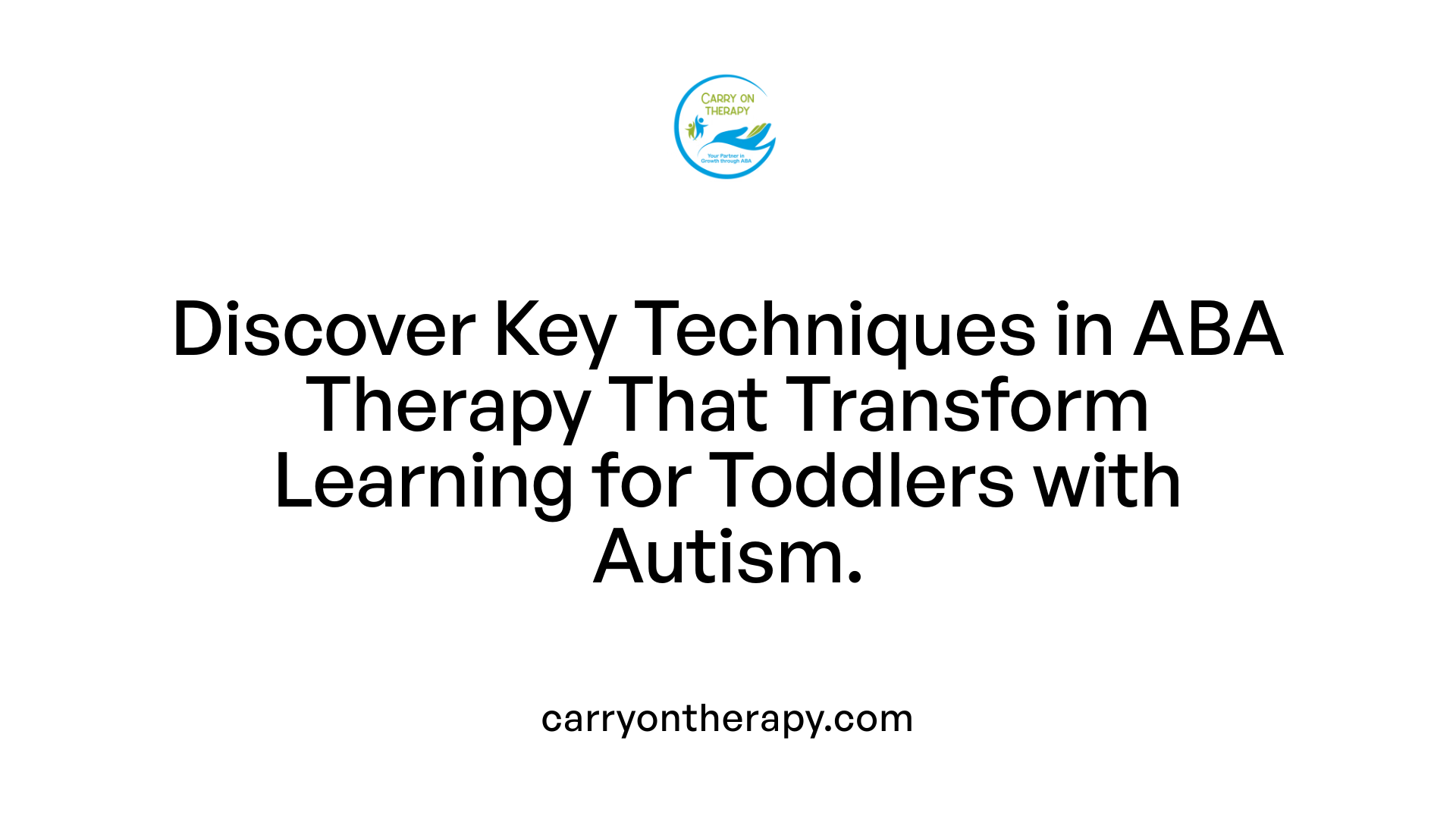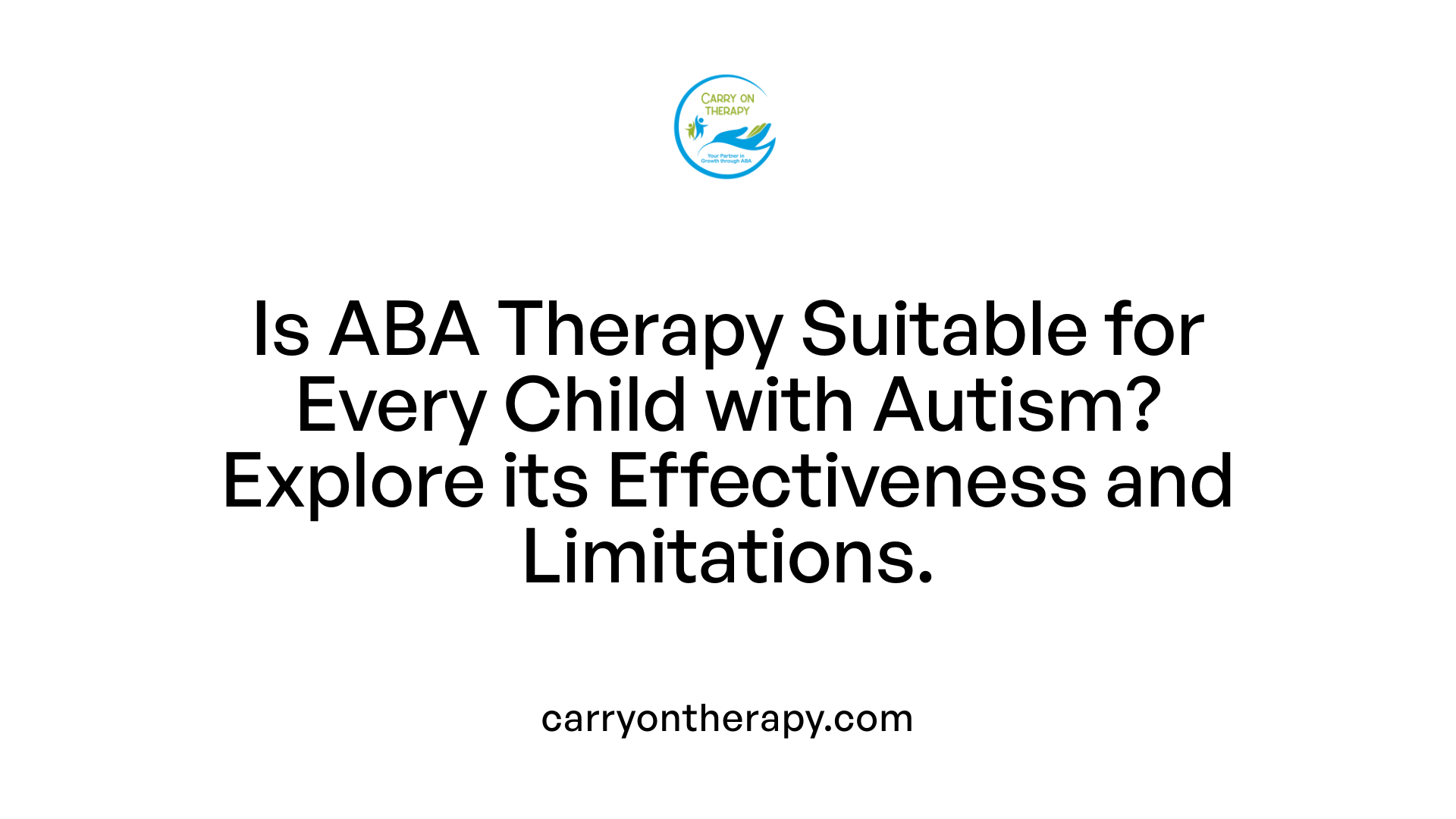How Do You Help a 2 Year Old with Autism
Effective Early Interventions for Toddlers with Autism

Understanding the Path to Support
Helping a 2-year-old child with autism involves early and targeted interventions that foster communication, social skills, and independence. Recognizing the brain's plasticity during toddlerhood, specialized therapies like Applied Behavior Analysis (ABA) and developmental models capitalize on this critical period to make substantial developmental gains. With professional guidance and family involvement, these approaches aim to improve quality of life by equipping young children with essential skills for everyday interactions and learning.
Key Facts on Autism Interventions
- Applied Behavior Analysis (ABA) therapy is a science-driven, individualized approach to support children with autism development.
- ABAs team typically includes a Board-Certified Behavior Analyst (BCBA) who designs programs and Registered Behavior Technicians (RBTs) who implement them.
- ABA employs techniques like positive reinforcement, discrete trial training (DTT), prompting and fading, and natural environment teaching to foster skill development.
- ABA targets communication, social skills, daily living skills, and challenging behavior reduction in toddlers with autism.
- Sessions generally last from 10 to 25 hours weekly, blending structured and play-based activities tailored to the child's needs.
- Parent training is vital, empowering families to reinforce skills and manage behaviors to generalize learning across environments.
- Early intervention with ABA—preferably launched by age 2 or 3—can lead to significant cognitive, language, and social improvements.
- Developmental and social-relational approaches like Early Start Denver Model (ESDM) and Floor Time use play-based and relationship-focused strategies.
- Complementary therapies such as animal-assisted therapy or dietary interventions can support well-being but should be guided by healthcare professionals.
- Research shows high effectiveness of ABA for many, though success varies depending on individual factors, therapy quality, and family involvement.
1. ABA Therapy: Building Foundational Skills in Toddlers with Autism

What is Applied Behavior Analysis (ABA) therapy?
Applied Behavior Analysis (ABA) therapy is a science-driven approach focused on helping children with autism develop essential skills for daily living. It is individualized to each child and uses principles like positive reinforcement to encourage desirable behaviors while reducing challenging ones. This therapy relies on careful assessment and ongoing data collection, ensuring that interventions are tailored to meet the child's evolving needs. ABA can be provided in different environments such as home, school, or the community, aiming to improve communication, social skills, and independence.
Who are the key members of the ABA therapy team?
A typical ABA therapy team for toddlers includes a Board-Certified Behavior Analyst (BCBA) who is responsible for comprehensive evaluation, program design, and oversight. Registered Behavior Technicians (RBTs) often deliver the daily therapy sessions, working closely under the BCBA's guidance. Additionally, specialists like speech therapists or occupational therapists may collaborate to address related developmental needs, ensuring a multidisciplinary approach.
What techniques are used in ABA therapy for toddlers?
ABA therapy incorporates various strategies to teach and reinforce skills:
- Positive Reinforcement: Rewarding desirable behaviors to encourage their recurrence.
- Discrete Trial Training (DTT): Breaking down skills into small, teachable steps, using prompts and rewards in a structured setting.
- Prompting and Fading: Providing cues (physical or verbal) to aid learning and gradually reducing support to foster independence.
- Natural Environment Teaching: Leveraging real-life settings like playtime or grocery stores to teach practical skills.
- Behavior Chain Technique: Dividing complex tasks into simple steps, teaching each until fluency is achieved.
These methods are woven into play-based sessions, making learning engaging and effective for toddlers.
What skills does ABA therapy target in toddlers?
ABA programs often focus on foundational abilities such as:
- Communication: Developing use of gestures, picture exchange systems, or speech.
- Social Interaction: Enhancing eye contact, turn-taking, and cooperative play.
- Daily Living Skills: Teaching feeding, dressing, and toilet training.
- Reducing Challenging Behaviors: Addressing tantrums, elopement, or other behaviors that interfere with learning.
Targeting these areas early harnesses the brain's plasticity to promote healthier developmental trajectories.
How intense are ABA therapy sessions for toddlers?
Therapy intensity usually ranges between 10 to 25 hours per week, adjusted to the toddler's attention span and developmental stage. Sessions blend structured teaching with naturalistic play, beginning with shorter durations that gradually increase to maintain engagement and foster skill acquisition. Consistency and repetition over time are critical for lasting progress.
Why is parent training important in ABA therapy?
Parents play a vital role in reinforcing learned skills outside therapy sessions. ABA programs include training for families, equipping them with strategies to support communication, manage behaviors, and create supportive routines at home. This partnership accelerates learning and helps generalize skills across settings, benefiting both the child and family dynamics.
How effective is ABA therapy for toddlers with autism?
ABA is recognized worldwide as an evidence-based treatment, with over 20 studies supporting its ability to improve intellectual functioning, language, social interactions, and reduce problem behaviors. High-quality early intervention programs can lead to remarkable gains, with some children showing significant developmental improvements. Early initiation of ABA therapy—often by ages 2 or 3—maximizes benefits by capitalizing on early brain plasticity.
| Topic | Description | Details |
|---|---|---|
| Therapy Principles | Uses behavioral science to encourage positive behaviors and reduce challenges | Techniques include positive reinforcement, prompting, discrete trial training |
| Therapy Team | BCBA directs and designs; RBTs implement; specialists may contribute | Multidisciplinary approach ensures comprehensive care |
| Skills Targeted | Communication, social skills, daily living, behavior reduction | Critical for development during ages 2-3 |
| Intensity & Structure | 10-25 hours/week tailored to child's needs | Sessions mix play-based and structured teaching |
| Parent Training | Empowers families to reinforce skills and manage behaviors in daily life | Enhances generalization and family well-being |
| Evidence & Effectiveness | Supported by extensive research and professional endorsements | Demonstrated improvements in language, cognition, and social skills |
2. Developmental and Social-Relational Approaches for Young Children with Autism

What is the Early Start Denver Model (ESDM) and how does it use play-based techniques?
The Early Start Denver Model (ESDM) is a developmental intervention designed specifically for very young children with autism, typically ages 12 to 48 months. It integrates principles of Applied Behavior Analysis (ABA) with developmental and relationship-based approaches.
ESDM focuses heavily on play and social interaction as tools for learning important skills. During sessions, therapists engage toddlers in naturalistic, fun activities that encourage communication, social engagement, and cognitive growth. These play-based techniques help children develop language, social reciprocity, and learning abilities in ways that feel natural and motivating to them.
How do speech and occupational therapies integrate with developmental approaches?
Speech and occupational therapies often complement developmental strategies like ESDM. Speech therapy works on improving a child’s ability to understand and use language—whether spoken or non-verbal communication such as gestures or picture exchange systems.
Occupational therapy supports the development of daily living skills and fine motor abilities. For example, it teaches toddlers how to manage sensory challenges, coordinate movements for feeding or dressing, and build independence in everyday routines.
These therapies are usually coordinated alongside ABA or developmental programs to ensure a holistic approach tailored to each child's individual needs.
What are social-relational strategies like DIR, Floor Time, social stories, and social skills groups?
Social-relational approaches emphasize emotional connections, social motivation, and communication through interpersonal interaction.
The Developmental, Individual-difference, Relationship-based model (DIR), often called Floor Time, encourages parents and therapists to follow the child’s lead during play, building emotional bonds and expanding the child's social world naturally.
Social stories use simple, personalized narratives to help children understand social situations and expected behaviors. Meanwhile, social skills groups provide structured peer interactions, helping toddlers learn sharing, turn-taking, and emotional regulation alongside other children.
Other methods like Relationship Development Intervention (RDI) also focus on improving social and emotional abilities through guided practice with parents and peers.
What role do complementary therapies play and why is professional guidance important?
Many families choose to supplement traditional treatments with complementary therapies such as animal-assisted therapy, mindfulness exercises, arts therapies, special diets, or herbal supplements. While these approaches can improve relaxation, sensory processing, or overall well-being, their effectiveness varies and scientific support is limited.
Therefore, it’s crucial that families consult healthcare professionals before introducing any complementary therapies to ensure safety and to integrate these methods appropriately alongside proven interventions.
How do educational approaches like TEACCH support children with autism?
TEACCH (Treatment and Education of Autistic and Communication related handicapped Children) uses visual learning strategies and highly structured environments to promote understanding and predictability for children with autism.
By organizing classrooms with clear schedules, visual cues, and work systems, TEACCH helps children navigate learning tasks and social expectations more easily. This approach boosts independence, academic skills, and reduces anxiety by fostering a sense of control and routine.
What are the benefits of early intervention on developmental outcomes?
Initiating intervention as early as possible, often around ages 2 to 3, takes advantage of the brain’s heightened plasticity during early childhood. Early programs improve language skills, social engagement, cognitive abilities, and adaptive behaviors.
Children diagnosed early and receiving individualized therapies frequently achieve significant gains in communication, motor skills, and social interaction. Some even progress to the extent that they no longer meet criteria for autism spectrum disorder.
Early intervention also facilitates smoother adaptation to school and community settings by building foundational skills and reducing challenging behaviors.
How does family involvement reduce caregiver stress?
Family training and inclusion in therapy programs are vital components of early intervention. Parents learn effective strategies to reinforce newly acquired skills, manage behaviors, and embed learning opportunities in daily routines.
This empowerment reduces caregivers’ stress by increasing confidence and improving family dynamics. When families are active participants, children tend to generalize skills more successfully across environments, resulting in faster and more lasting progress.
| Approach | Main Features | Benefits for Toddlers with Autism |
|---|---|---|
| Early Start Denver Model | Play-based, ABA-informed, social engagement | Enhances language, social, cognitive development |
| Speech & Occupational Therapy | Language and daily living skills | Improves communication, motor skills, sensory integration |
| Social-Relational Strategies | DIR/Floor Time, social stories, social skills | Builds emotional bonds, social motivation, and peer skills |
| Complementary Therapies | Animal therapy, diets, arts, mindfulness | Supports well-being, requires professional guidance |
| TEACCH Educational Approach | Visual supports, structured routines | Promotes independence, reduces anxiety, supports learning |
| Early Intervention Overall | Family training, individualized programs | Leads to better developmental outcomes and caregiver well-being |
Who provides ABA therapy services?

Who provides ABA therapy services?
ABA therapy services are delivered by a team of trained professionals working collaboratively to support toddlers with autism.
Roles of BCBAs, RBTs, and other therapists
The cornerstone of ABA therapy is the Board-Certified Behavior Analyst (BCBA). BCBAs are responsible for conducting comprehensive assessments, designing individualized treatment plans, and overseeing progress. Registered Behavior Technicians (RBTs) typically implement the daily therapy sessions under BCBA supervision, using techniques tailored to each child's needs. Additionally, other specialists such as speech therapists and occupational therapists often work alongside ABA providers to address complementary developmental areas.
Specialized centers and clinic involvement
ABA therapy is frequently offered at specialized autism centers and clinics dedicated to developmental disorders. These facilities provide structured environments equipped for individualized and group sessions, ensuring access to a range of professionals and resources necessary for effective treatment.
Certification and qualifications importance
Proper certification is essential for ensuring quality and ethical ABA services. BCBAs must meet rigorous education, training, and examination standards, while RBTs require formal certification and supervised experience. Families seeking ABA therapy should verify provider credentials to maximize therapeutic outcomes and ensure adherence to best practices.
What techniques are commonly used in ABA therapy?

What techniques are commonly used in ABA therapy?
Applied Behavior Analysis (ABA) employs a variety of techniques to teach and reinforce desired behaviors in toddlers with autism. One of the most fundamental methods is positive reinforcement, where desirable behaviors are rewarded to encourage their repetition. For example, a child might receive praise or a favorite toy after successfully completing a task.
Discrete Trial Training (DTT) is a highly structured technique that breaks skills into small, manageable steps taught through repeated trials. Therapists present clear instructions, provide prompts if necessary, and reward correct responses, systematically building new skills.
Visual support plays a big role too, with visual and video modeling allowing children to learn by watching demonstrations of social behaviors or emotional expressions. Videos are especially helpful for visual learners, enhancing understanding through observation.
To support independence, prompting and fading are used. Initially, therapists give physical or verbal cues to help a child perform a skill, then gradually reduce these prompts to encourage independent performance.
For more complex activities, behavior chaining breaks down tasks into sequential steps, teaching each part one at a time until the entire behavior can be performed smoothly. Additionally, behavior contracts establish clear agreements about expected behaviors and rewards, boosting motivation and accountability.
Lastly, natural environment teaching places learning opportunities in everyday settings, like a grocery store, helping toddlers apply skills in real-life contexts and improving generalization.
These techniques, customized to each child’s needs, work together to increase helpful behaviors and reduce challenges, forming the foundation of effective ABA therapy.
Is ABA therapy effective for all individuals with autism?

Effectiveness supported by research
Applied Behavior Analysis (ABA) therapy is widely recognized as an effective intervention for many children with autism spectrum disorder (ASD). Numerous scientific studies have demonstrated its ability to improve social skills, communication, daily living abilities, and reduce challenging behaviors. Early intensive ABA programs can lead to significant developmental gains, including better language, cognitive, and social outcomes.
Factors influencing success
The effectiveness of ABA varies depending on several factors, such as the child's age at intervention start, severity of symptoms, and individual learning styles. Early diagnosis and consistent, intensive therapy often yield the best results. Customized programs designed by Board-Certified Behavior Analysts (BCBAs) that match the child's unique needs enhance effectiveness. Family involvement and supportive environments also play critical roles in promoting progress.
Modern approaches and individualized care
Contemporary ABA emphasizes naturalistic, play-based methods alongside structured techniques like Discrete Trial Training (DTT). These individualized approaches focus on developing meaningful communication, social interaction, and life skills while respecting the child's preferences and emotional state. Therapists often incorporate various teaching styles to engage children effectively and foster generalization of skills across settings.
Limitations and emotional considerations
While ABA benefits many, it is not universally effective for all individuals with autism. Some children may show limited response or require alternative methods. Emotional well-being and the child's comfort are paramount, with modern ABA practices focusing on positive reinforcement and minimizing stress. Families and clinicians must monitor progress and modify strategies to ensure respectful and supportive treatment.
| Aspect | Description | Impact on Effectiveness |
|---|---|---|
| Research Evidence | Over 20 studies supporting ABA's benefits | Validates use as evidence-based intervention |
| Individual Differences | Severity, learning style, age, family involvement | Influences degree of progress and therapy success |
| Therapy Approach | Combination of naturalistic and structured ABA methods | Enhances engagement and functional skill growth |
| Emotional Sensitivity | Focus on positive reinforcement, reducing stress | Improves child participation and satisfaction |
In summary, ABA therapy is a proven and adaptable treatment that works well for many, though not all, children with autism. Tailoring approaches and respecting individual needs are essential for maximizing benefits.
Starting Early for Lasting Progress
Supporting a 2-year-old with autism requires a blend of evidence-based behavioral therapy and developmental strategies, tailored to the child’s unique profile. Applied Behavior Analysis (ABA) therapy, with its structured yet flexible techniques, combined with developmental and social-relational approaches, offers a comprehensive path to enhance language, social skills, and daily living capabilities. Early intervention harnesses the brain’s natural plasticity, boosting long-term outcomes and promoting greater independence. Crucially, engaging families as partners in therapy fosters skill generalization and improves family wellbeing. By starting support early, young children with autism can achieve meaningful growth that paves the way for more confident participation in their communities and future learning environments.
References
- ABA Therapy for Toddlers: Essential Early Intervention Guide
- Treatment and Intervention for Autism Spectrum Disorder
- Early Intervention for Autism | NICHD
- Early Behavioral Intervention for Autism
- Understanding ABA Techniques: 7 Strategies You Need to ...
- Applied Behavior Analysis (ABA)
- Behavioral Therapies: Key Interventions in ASD
- Applied Behavior Analysis (ABA)







